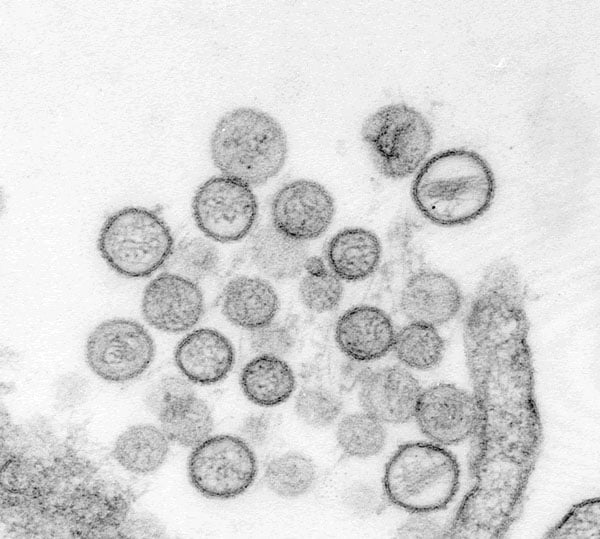| Description |
|
The New Mexico Department of Health announced today that a
12-year-old boy from McKinley County died of Hantavirus Pulmonary
Syndrome (HPS). This is the third case of Hantavirus in New Mexico this
year and the second death. An environmental investigation will be
conducted at the home of the patient to help reduce the risk to others.
Hantavirus is a deadly disease transmitted by infected rodents through
urine, droppings or saliva. People can contract the disease when they
breathe in aerosolized virus. The deer mouse is the main reservoir for
Sin Nombre virus, the Hantavirus strain most commonly found in New
Mexico. "People are usually exposed to Hantavirus around their homes,
especially when they clean out enclosed areas that have lots of mouse
droppings," said Dr. Paul Ettestad, the Department of Health’s public
health veterinarian. "With the cold weather, mice may try to enter
buildings for shelter so it is important to seal up homes and other
structures that are used by people. Mice can squeeze through holes the
size of a dime." Early symptoms of Hantavirus infection include fever
and muscle aches, possibly with chills, headache, nausea, vomiting,
diarrhea, abdominal pain and cough which progresses to respiratory
distress.
|
| Biohazard name: |
Hantavirus (human, fatal) |
| Biohazard level: |
4/4 Hazardous |
| Biohazard desc.: |
Viruses and bacteria that cause severe to fatal disease in humans,
and for which vaccines or other treatments are not available, such as
Bolivian and Argentine hemorrhagic fevers, H5N1(bird flu), Dengue
hemorrhagic fever, Marburg virus, Ebola virus, hantaviruses, Lassa
fever, Crimean-Congo hemorrhagic fever, and other hemorrhagic or
unidentified diseases. When dealing with biological hazards at this
level the use of a Hazmat suit and a self-contained oxygen supply is
mandatory. The entrance and exit of a Level Four biolab will contain
multiple showers, a vacuum room, an ultraviolet light room, autonomous
detection system, and other safety precautions designed to destroy all
traces of the biohazard. Multiple airlocks are employed and are
electronically secured to prevent both doors opening at the same time.
All air and water service going to and coming from a Biosafety Level 4
(P4) lab will undergo similar decontamination procedures to eliminate
the possibility of an accidental release. |
| Symptoms: |
|
| Status: |
confirmed |








No comments:
Post a Comment
Hello and thank you for visiting my blog. Please share your thoughts and leave a comment :)